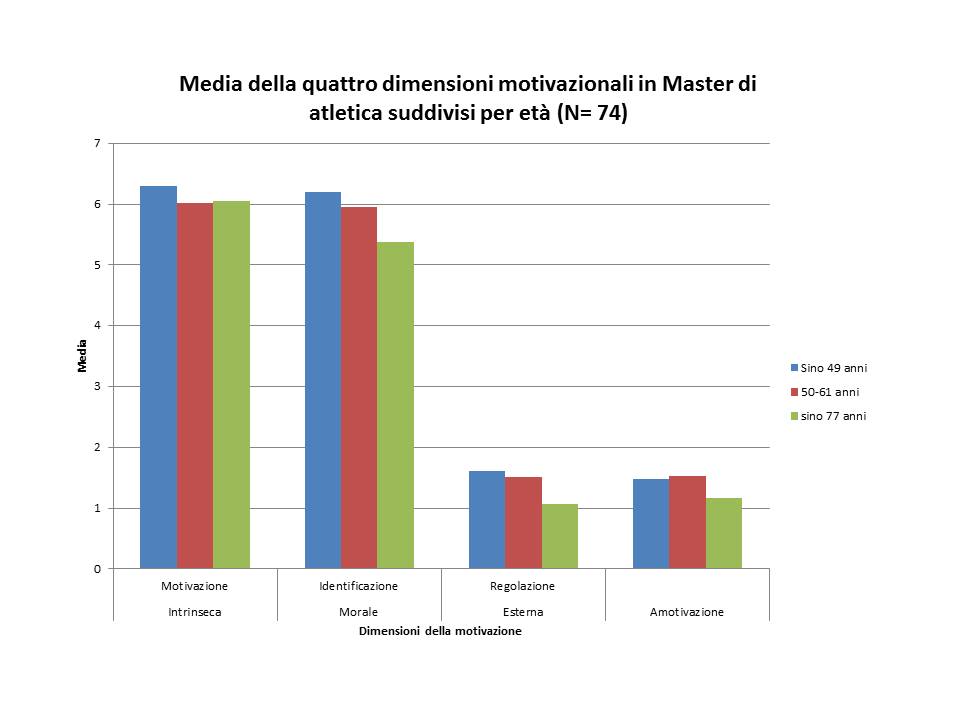The phenomenon related to adult and aged people’s practice is more and more increasing, specially in long distance running, but also in the various track disciplines. A study was carried out on track and field masters, taking part at the Italian Master Championships with the aim of studying motivation, using the self-determination theory, pointing out relations between the psychological dimensions, the different age categories and the characteristics of sport career. Another goal was aimed at identifying a series of information on their sport career, such as the “sport life” and the kind of activity during their practice.
The data about the characteristics of the practice are the following:
- 55% has been track and field young athlete, while the 40% has practiced athletics
- 47% started this sport less than two years ago, 27,5% since 2/3 years and 15% since more that 15 years
- 82,5% practice all the year, while 12,5% only sometimes
- 46,3% train 3/4 times per week, while 28,8% more often
- 51,3% train alone, while 35,3% in group and 7,5% both
- 80% train in a track field
- 42,5% is without a coach, while 51,3% with a coach
- 60% don’t train in also in the gym, while 35% in a gym too
(Carbonaro, Cei, Ruscello and Quagliarotti, Atletica Studi, 2016, 3/4, 28-40)









